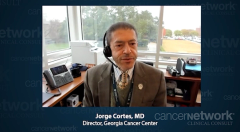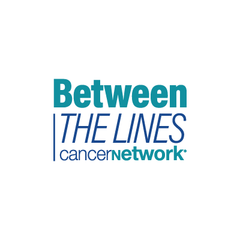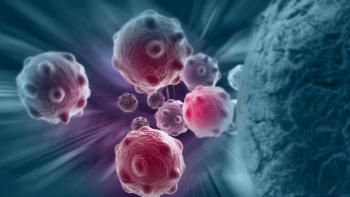
Optimal Ponatinib Dose Selection for a Given Patient Population
Dr. Cortes reviews ponatinib dosing strategies based on patient profiles and mutational status.
Episodes in this series

Transcript:
Jorge E. Cortes, MD: We see many colleagues stay away from ponatinib in situations when it’s indicated, when it’s the best option, and when it goes against the best interest of the patient. In a patient who received 2 or 3 TKIs [tyrosine kinase inhibitors] or who has T315I mutation, the biggest risk that patient has is the disease, not the arterial occlusive event and even less toxicity. The first message is that ponatinib, as you mentioned, is probably the most effective drug we have, and we can make it much safer. Staying away from it because of concerns in the majority of patients isn’t justified.
Going back to your point, we agree on the T315I; the difference is big. There are more than twice as many responses with the 45-mg daily dosage, and those patients need to be treated with 45 mg. For the other patients, I see it differently because even in patients who have no mutations or who have other mutations, there’s still a benefit in favor of the 45 mg daily. The response rate is higher with 40 to 45 mg daily. There’s no survival benefit, but the follow-up is very short. The median follow-up on this study is not even 3 years, so it’s a bit too soon to expect a survival benefit. It’s not enough follow-up, but we’re starting to see a progression-free survival benefit.
Our mentor would tell us to ignore the furthest third of any survival curve because it has too few observations. That’s when you see the difference in progression-free survival, so I’ll give you that. But it’s too soon to see a survival benefit in this patient population. With the response rate benefit that you see with the 45 mg daily, I prefer to use that. The other thing is that for patients who started with 45 mg daily at the end of year 1, their median dose intensity was lower than the patients who started with 30 mg because since they responded, you lowered the doses. If you start with 30 mg daily, then overall you end up giving them more treatment and more drug than if you start with 45 mg daily. To me, 45 mg daily is the dosage for the majority of my patients.
Transcript edited for clarity.
Newsletter
Stay up to date on recent advances in the multidisciplinary approach to cancer.



















































































